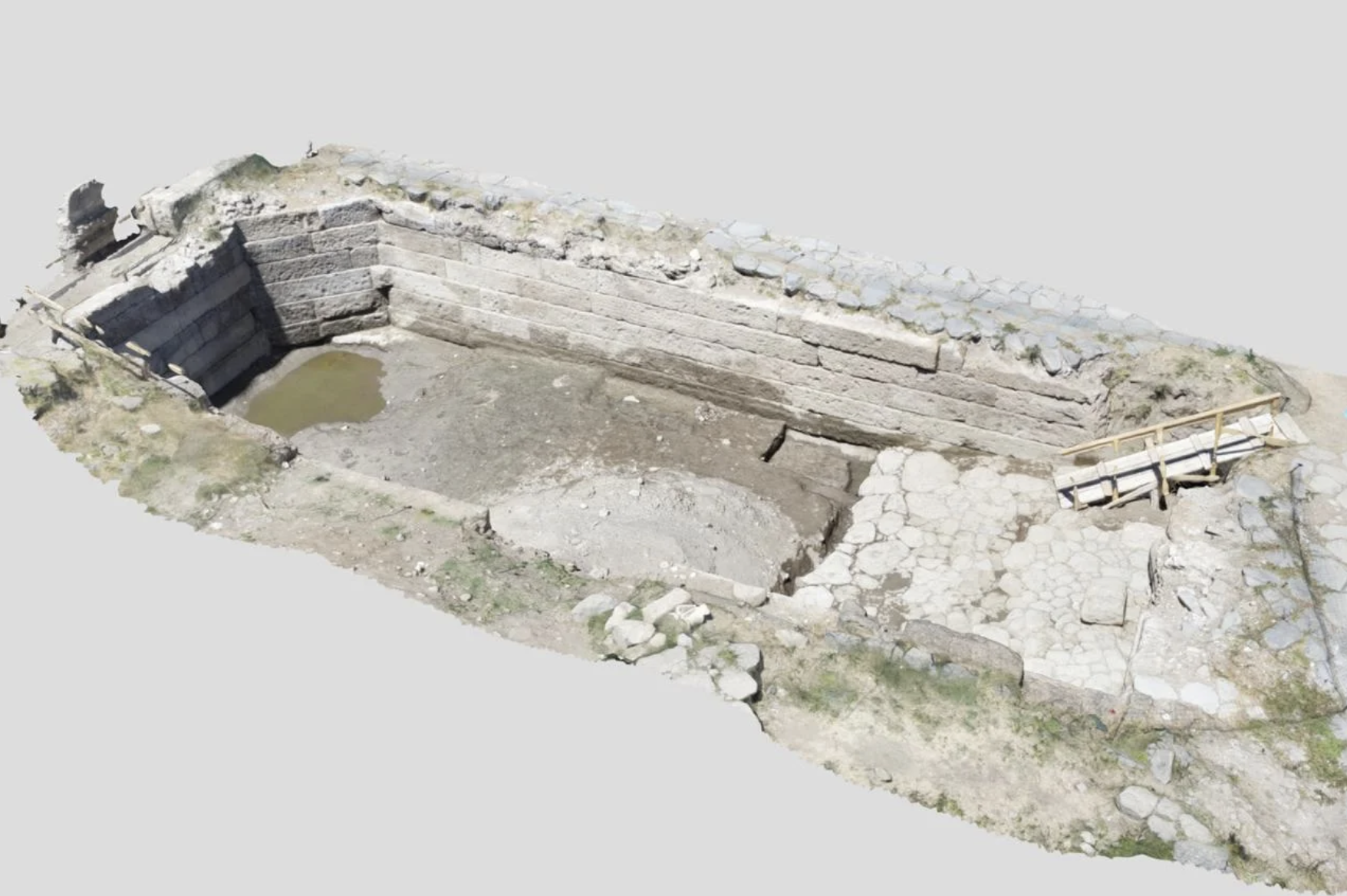Archaeologists Discover Massive Ancient Roman Basin in Gabii, Italy!
Archaeologists have uncovered the remains of a huge stone-lined basin in the ancient Roman city of Gabii, located around eleven miles east of Rome. Partially carved into the bedrock and dating back to approximately 250 BCE, this structure represents one of the earliest examples of Roman monumental architecture beyond temples and city walls. The discovery was made by a team led by Professor Marcello Mogetta, Chair of the Department of Classics, Archaeology, and Religion at the University of Missouri.
Researchers suggest the basin was more than a practical feature. Positioned close to Gabii’s central crossroads, it likely formed part of a monumental pool within the city’s forum, the hub of civic and social life. As an early example of a planned public space, it offers a rare glimpse into how the Romans began using urban design and monumental architecture to project both community identity and political authority.
Gabii’s exceptional state of preservation makes it a unique site for studying early Roman cities. Once a significant rival to Rome, Gabii was largely abandoned by around 50 BCE. This left its original streets and structures remarkably intact beneath layers of soil. In contrast to Rome, where early urban layers are obscured by subsequent construction, Gabii provides a clear view of the city’s initial layout and design.
The basin adds to previous discoveries by Mogetta’s team, including the “Area F Building,” a terraced complex carved into the slope of a volcanic crater around which the city developed. Together, these finds show how early Roman architects drew inspiration from Greek models, such as the Parthenon and the Agora, adapting these grand civic spaces to express power, functionality, and technical innovation in a distinctly Roman context.
Since recognising the cultural significance of Gabii, Italy’s Ministry of Culture has designated the site as an archaeological park, managed by the Musei e Parchi Archeologici di Praeneste e Gabii. This status has enabled ongoing excavation through the international Gabii Project, now led by Mogetta. The team, supported by Italy’s General Directorate of Museums, plans to study the materials deposited within the basin, as well as the surrounding stone-paved area.
Archaeologists also hope to investigate a nearby “anomaly” identified through thermal imaging surveys, which could be a temple or another civic building connected to the basin’s use and eventual closure around 50 BCE. Excavations have already yielded complete vessels, oil lamps, perfume containers, and cups with unusual markings, some of which appear to have been deliberately placed as ritual offerings linked to the basin and its symbolic association with water.
The Gabii Project continues to shed light on how early Romans balanced religion, politics, and urban planning. A key question under debate is whether civic spaces preceded religious centres or vice versa. A determination that could significantly reshape our understanding of the development of Roman cities and the role of monumental architecture in defining communal identity.

